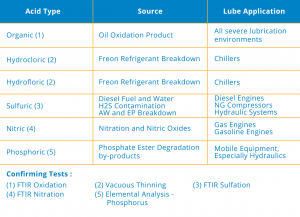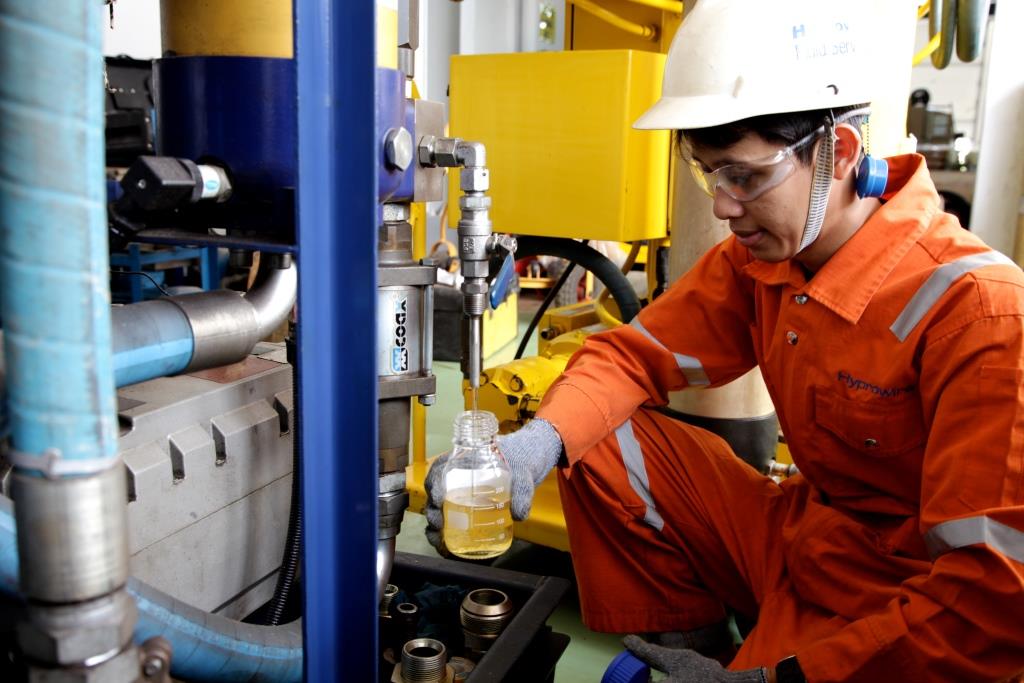
Managing Total Acid Number (TAN) with respect to your Oils and how to manage excessive wear by regular analysis
Total Acid Number is an analytical test which determines the level of acidity in the oil and the level of deterioration of the lubricant. The more acidic a lubricant is, the further its degradation has proceeded. When oils or hydraulic oils breakdown, they generally form acidic by-products which can :
- Accelerate wear
- Form deposits – Varnish, sludge and sedimentation formation
- Increase viscosity
- Base oil breakdown
- Additive depletion
- Loss of lubricity
- Rust formation and corrosion
- Filter plugging
- The danger of component failure
Oils in the system continuously react with atmospheric oxygen to create organic oxidation products which are acidic in nature. At normal or ambient temperature, this reaction is very slow and thus has a little or minor effect on the oil. But at higher or elevated temperatures which exist within the system or engine, these rates are compounded and are much higher and can generate high levels of weak organic acids.
Total Acid Number or TAN is the measure of both the weak organic and strong inorganic acids present in the oil. It applies to :
- Hydraulic Oils
- Gas engine
- Gearbox
- Gas turbine
Acidity is of different types, mainly weak acids and strong acids and can be further classified as Organic, Hydrochloric, Hydrofluoric, Sulphuric, Nitric and Phosphoric as shown below :
When should the Oil be changed with respect to Acid Number (TAN) :
The initial Acid Number of the new oil is determined by the amount of acid present in it. So supposing the new oil or fresh oil has a starting acid number between 0.5 to 1.00 mg KOH/g then it would be generally recommended that the oil be changed when the acid number is four times greater than the acid number of fresh oil. Thus an oil with an initial or starting acid number of 1.00 mg KOH/g should be changed when the acid number test result is 4.00 mg KOH/g or greater. However, in most cases, it is generally recommended that the oil be changed if the acid number is greater than 2.50 mg KOH/g.
Total Acid Number (TAN) Testing and Analysis
Test method which we are using for monitoring the degradation acid content of in-service oil or used oil. The acid number test is performed by diluting the sample with a mixed solvent in a reaction beaker. After mixing, potassium hydroxide is titrated to chemically react with acidic components in the sample. When the end point of the chemical reaction is reached, the amount of titrant used is reported in milligrams of potassium hydroxide equivalent per gram of sample (mg of KOH/g).
ATLAS LAB uses the following test methods for determination of Acid Number, Total Acid Number (TAN):
METHOD | DESCRIPTION |
ASTM D664 | Standard Test Method for Acid Number of Petroleum Products by Potentiometric Titration acid number |
ASTM D974 | Standard Test Method for Acid and Base Number by Color-Indicator Titration color indication titration |
ASTM D1534 | Standard Test Method for Approximate Acidity in Electrical Insulating Liquids by Color-Indicator Titration |
ASTM D3339 | Standard Test Method for Acid Number of Petroleum Products by Semi-Micro Color Indicator Titration |
IP 177 | Determination of weak and strong acid number – Potentiometric titration method |
IP 139 | Petroleum products and lubricants – Determination of acid or base number – Colour-indicator titration method |
IP 354 | Determination of the acid number of aviation turbine fuels |
ISO 6618 | Petroleum products and lubricants — Determination of acid or base number — Colour-indicator titration method |
ISO 6619 | Petroleum products and lubricants — Neutralization number — Potentiometric titration method |
ISO 7537 | Petroleum products — Determination of acid number — Semi-micro colour-indicator titration method |
IS 1448 Part 1 | Determination of Acid Number of Petroleum Products by Potentiometric titration |
Testing Equipment used by us in our laboratory : Mettler Toledo G20








